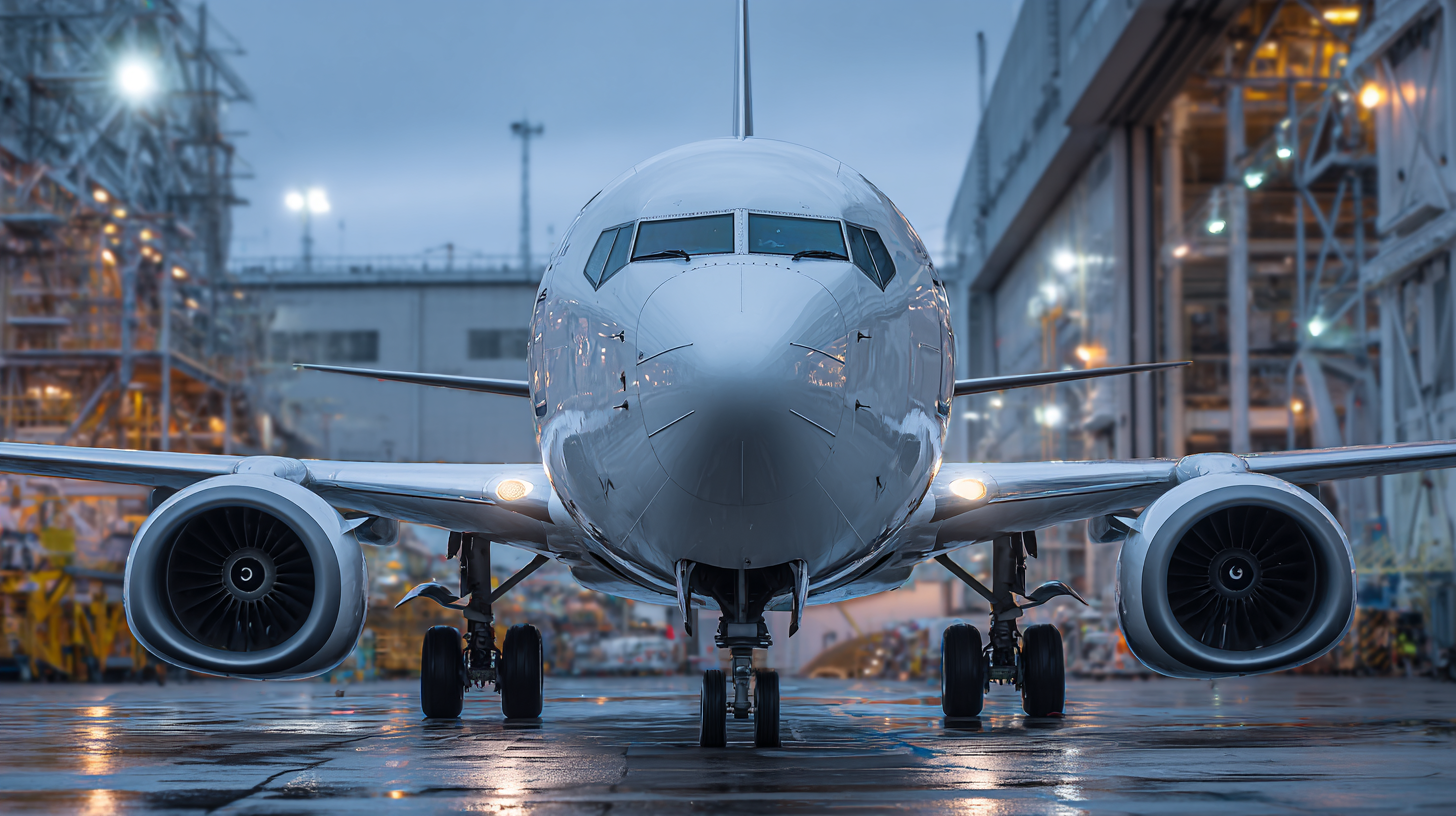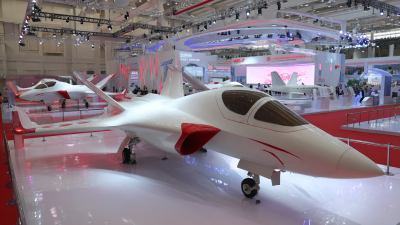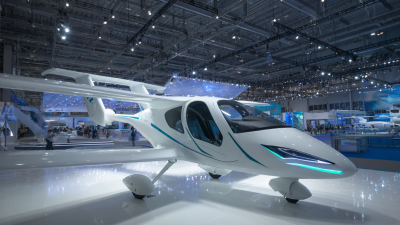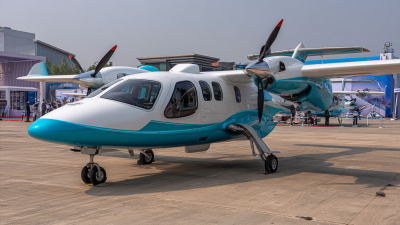5 Best Solutions for Exceptional Aircraft Service Efficiency
In the aviation industry, exceptional aircraft service is crucial for maintaining operational efficiency and customer satisfaction. According to a recent report by the International Air Transport Association (IATA), approximately 30% of airline delays are attributed to ground service inefficiencies, which highlights the need for optimized service strategies. Additionally, the Boeing 2022 Commercial Market Outlook projects a demand for over 43,000 new aircraft in the next 20 years, further emphasizing the importance of improving aircraft service processes to accommodate this growth. As airlines strive to enhance their competitiveness, implementing innovative solutions for aircraft service efficiency becomes imperative.

This outline delves into the five best solutions that can significantly elevate service quality, reduce turnaround times, and ultimately contribute to a more seamless travel experience for passengers, ensuring that the aviation sector can meet the soaring demand of the future.
Maximizing Aircraft Turnaround Time: Strategies for Cutting Overhead by 30%
Maximizing aircraft turnaround time is critical for airlines aiming to improve service efficiency while cutting operational costs. One effective strategy involves streamlining ground operations through enhanced coordination among teams. Implementing real-time communication tools can significantly reduce delays during boarding, refueling, and maintenance. When all departments work in unison, the potential for turnovers to run 30% faster becomes achievable, allowing aircraft to spend more time in the air rather than on the ground.

Another key approach is the adoption of predictive maintenance technologies. By using data analytics to anticipate maintenance needs, airlines can schedule repairs during downtime, rather than opting for more disruptive, reactive strategies. This not only reduces turnaround times but also enhances the reliability of operations. Furthermore, training staff to respond quickly to unforeseen delays can create a more agile response ecosystem, ensuring that each turnaround is as efficient as possible. Implementing these strategies allows for a more streamlined operation, paving the way for both cost reduction and improved customer satisfaction.
Leveraging Predictive Maintenance to Reduce Downtime by 40% in Aircraft Operations
In the aviation industry, maximizing aircraft service efficiency is paramount, especially with the increasing pressure to minimize operational costs and enhance reliability. A significant strategy that has emerged is predictive maintenance, which can reduce downtime by up to 40%. According to a report by the International Air Transport Association (IATA), predictive maintenance not only streamlines aircraft operations but also extends the lifespan of aircraft components, leading to substantial cost savings.
To implement predictive maintenance effectively, airlines must invest in advanced analytics and machine learning technologies. These tools enable airlines to analyze real-time data from various aircraft systems, predicting potential failures before they occur. A study by Accenture revealed that airlines leveraging predictive maintenance can achieve a 10% to 20% reduction in maintenance costs, significantly improving their bottom line.
Tips: Invest in robust data analytics tools to ensure comprehensive monitoring of aircraft systems. Regular training for maintenance personnel on predictive analytics can enhance their ability to interpret data effectively. Additionally, fostering a culture of continuous improvement can lead to better insights and innovations in maintenance practices, ultimately enhancing overall service efficiency.
Implementing Advanced Technology for Streamlined Fleet Management and Efficiency
In the fast-paced aviation industry, leveraging advanced technology is critical for enhancing fleet management efficiency. According to a recent industry report, organizations that adopt data analytics and automated systems can boost their operational efficiency by up to 40%. This transformation not only optimizes scheduling and maintenance processes but also significantly reduces operational costs associated with downtime and resource misallocation.

Implementing solutions such as predictive maintenance powered by Artificial Intelligence (AI) allows airlines to anticipate issues before they become critical. A study by the International Air Transport Association (IATA) suggests that predictive maintenance can lead to a 25% reduction in maintenance costs and a significant increase in aircraft availability. Fleet management systems integrated with IoT capabilities enable real-time tracking and performance monitoring, ensuring that fleet operators can make informed decisions quickly.
Tips:
1. Consider investing in software solutions that facilitate real-time data analysis to enable proactive fleet management.
2. Train your staff on the latest technology trends to ensure seamless integration into existing workflows.
3. Regularly review and update technology to keep up with advancements, as this can lead to continuous improvement in service efficiency.
Enhancing Crew Scheduling Algorithms to Improve Operational Effectiveness by 25%
Enhancing crew scheduling algorithms through artificial intelligence can result in operational effectiveness improvements of up to 25%. AI-driven smart scheduling solutions address longstanding workforce-planning challenges, minimizing employee downtime and maximizing productivity. By leveraging advanced algorithms, these systems can analyze vast amounts of data related to crew availability, flight schedules, and regulatory requirements, ensuring optimal assignments that meet both operational needs and employee satisfaction.
Moreover, the integration of AI in scheduling can facilitate dynamic adjustments in real-time, further enhancing operational efficiency. As disruptions occur—whether from weather conditions or mechanical issues—AI can quickly reconfigure crew assignments, providing timely solutions that minimize delays and enhance service reliability. In this way, the application of AI not only streamlines operations but also fosters a more agile and responsive business model, essential for the fast-paced aerospace industry.
5 Best Solutions for Exceptional Aircraft Service Efficiency
Utilizing Data Analytics to Optimize Service Workflow and Customer Experience
In the evolving landscape of service efficiency, the integration of data analytics plays a pivotal role in enhancing both workflow and customer experience. The global user experience research software market is projected to expand significantly, with estimates suggesting a rise from $427.3 million in 2024 to $1.0306 billion by 2032, reflecting a compound annual growth rate (CAGR) of 11.6%. This growth underscores the urgency for companies to adopt advanced analytics tools that leverage artificial intelligence (AI) to optimize their service processes and improve customer interactions.
Tips: To harness the potential of data analytics, organizations should focus on implementing AI-driven solutions that facilitate real-time insights and predictive analytics. This not only improves operational efficiency but also enhances the overall customer journey by personalizing interactions based on data patterns.
Furthermore, embracing innovative technologies such as generative AI can transform procurement processes and supply chain management, as identified by recent industry studies. Companies that prioritize the deployment of such technologies can significantly enhance efficiency and remain competitive in the rapidly changing market landscape. By strategically investing in data analytics and AI, organizations position themselves to unlock new levels of service excellence and customer satisfaction.



